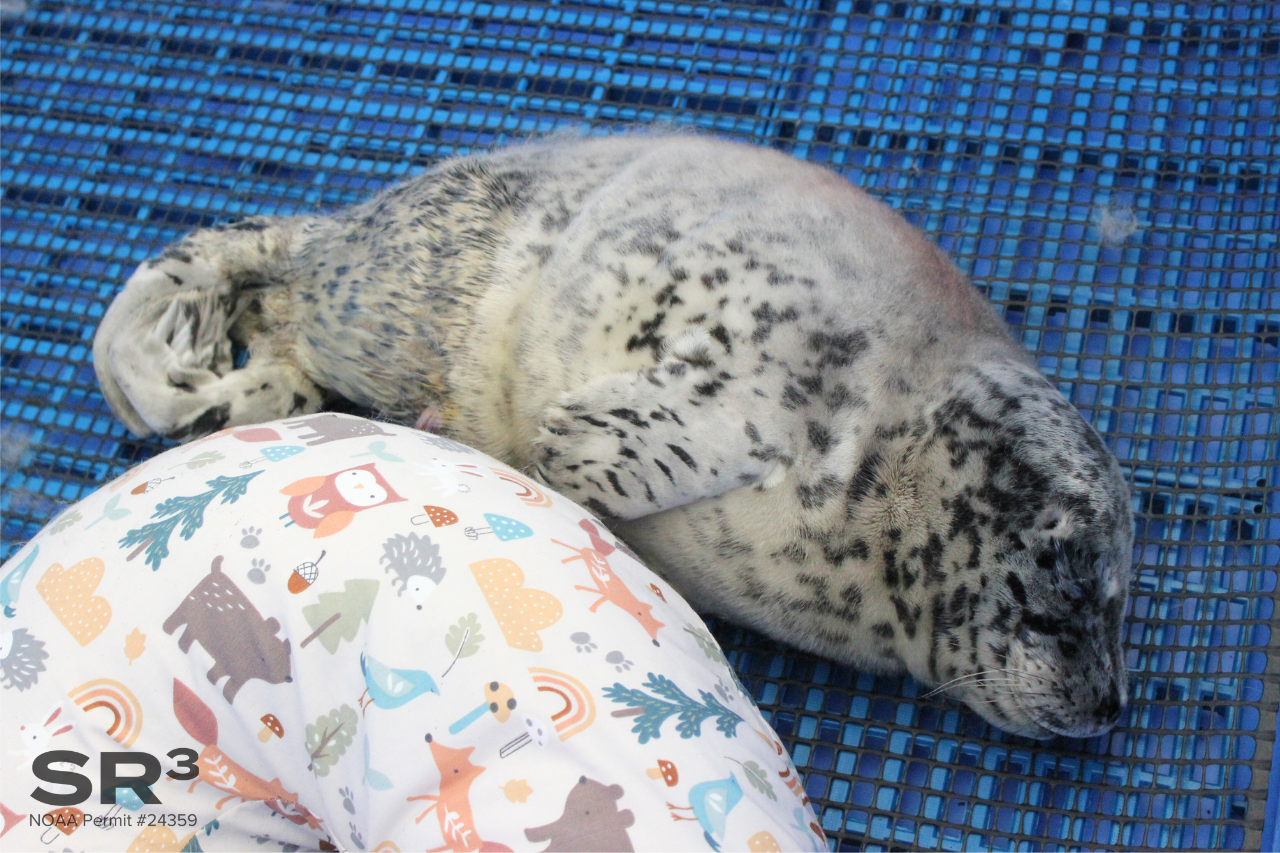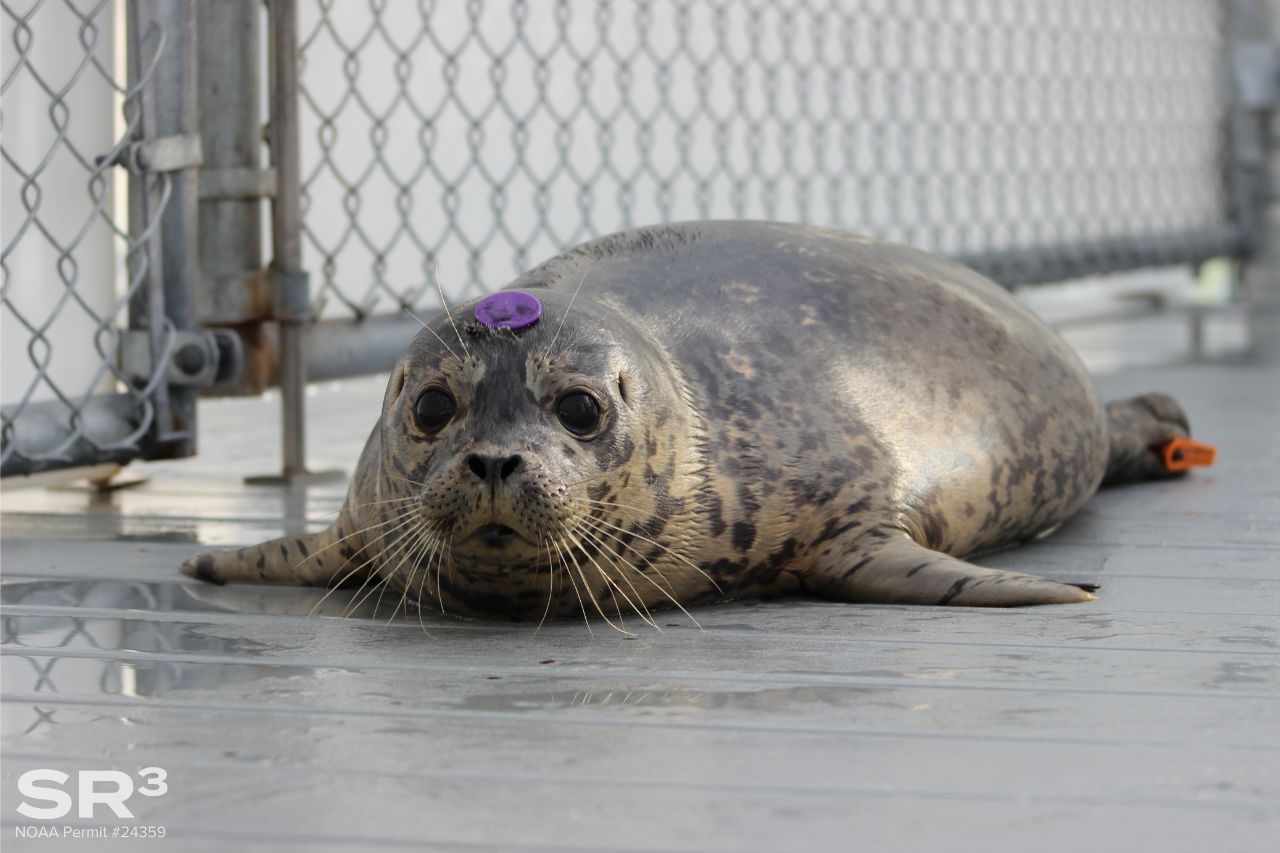“Pupnapping” in the Puget Sound
Human disturbance is one of the most common reasons patients come into care at SR3. From people and pets being in the same area as a marine mammal, all the way up to more direct interaction, there are many ways that people inevitably disrupt the natural behaviors of these wild animals.
In the summer of 2023, SR3’s 23rd patient was a prime example of direct human interaction that led to a pup becoming separated from his mom before he could survive on his own. The pup, who would soon be known as Relish, was looking for a place to rest. As he swam around an occupied boat, the boat owners grew concerned about his small size and frequent vocalizations. The folks on the boat, though well-intentioned, picked Relish up out of the water and brought him on board, an action that is illegal under the Marine Mammal Protection Act.
The boaters called the Marine Mammal Stranding Network once Relish was aboard their vessel, and after our partners assessed the situation, he came to SR3. While we were able to provide care, it is always best to leave pups and moms together in the wild.
Relish rests in his first few days of care. He is shedding white fur that is an occasional trait of newborn harbor seals.
Along Washington’s coast and in the Salish Sea, harbor seals are born mostly from May to September. Pups nurse for 4-6 weeks on their mother’s fatty milk before they are ready to be on their own in the wild. They are born with the ability to swim, but this month of development helps them grow larger and learn to forage, doubling their body weight in that short period of time.
During these first few weeks of their life, a pup may rest alone on shore, rocks, docks, or other infrastructure for hours at a time while their mom is off swimming and feeding in the area. While apart, harbor seal pups communicate with their mother using a call that can sometimes sound distressed, but is completely normal.
Relish’s case is an extreme example of the ways humans can impact marine mammals, since just being near a seal pup while they are resting can cause the adult to abandon her pup. As the Puget Sound is home to millions of people, human disturbance leading to maternal separation is unfortunately something we see often in the region. SR3 has cared for dozens of animals linked to human disturbance since the Rescue Center opened in 2021.
Once Relish was at SR3, he was fed a harbor seal milk substitute for several weeks before he was introduced to fish, mimicking the length of time he would have been nursing in the wild. Once herring was brought into his meals, what we call Fish School, it took him another three weeks until he was eating the fish on his own and competing with his poolmates for prey. Two months into his care, he started to gain weight more quickly, and once he had gained enough weight to be released back to the wild, Relish was safely returned to the ocean. He was at the Rescue Center for 105 days.
Relish just before release, over 30 pounds larger than he was when he arrived at the Rescue Center.
How can you keep moms and pups together in the wild?
Stay away: If you see a marine mammal, stay at least 100 yards away. If they turn to look at you, you’re too close!
Keep your pets on a leash: Pups of all kinds are curious, and keeping your pet on a leash ensures their safety along with the safety of the marine mammal.
Call the experts if you’re concerned: Call the Marine Mammal Stranding Network, 1-866-767-6114, to report the animal and its predicament. This way, trained responders can assess the situation.
Educate: Kindly alert others about the need to stay far away from the animal and keep their pets on a leash.
Whatever you do, don’t touch: Even if the animal looks like it is in distress, never interact with it. This causes more harm than good, and is also illegal under the Marine Mammal Protection Act.


